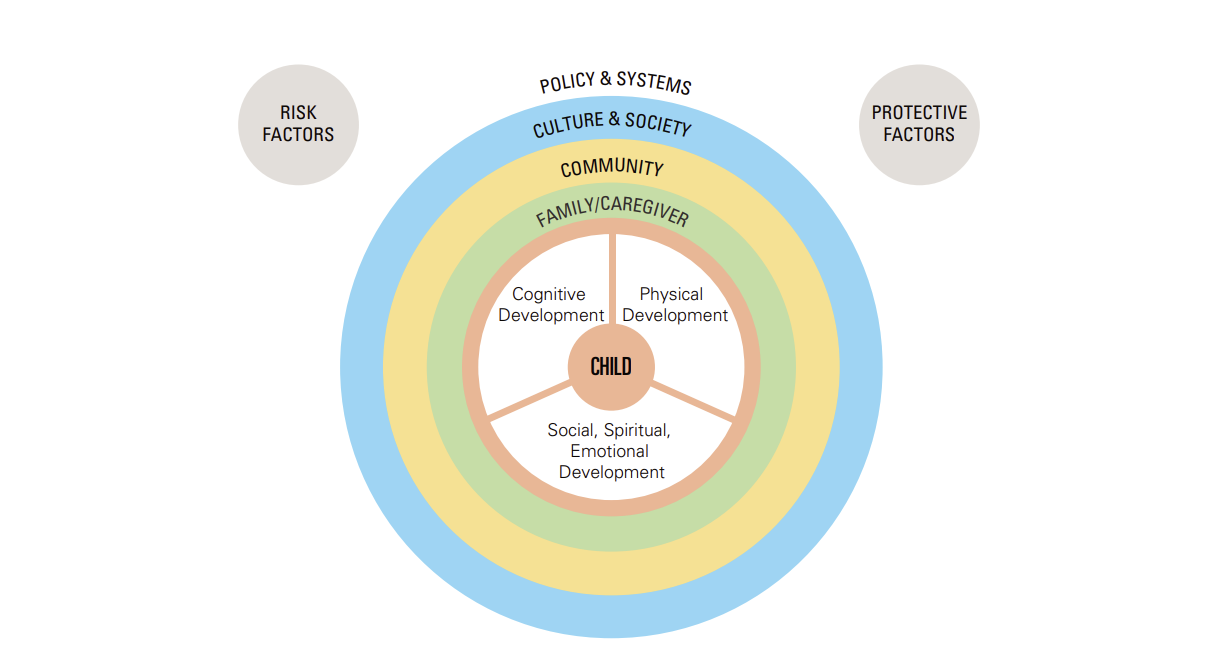UNICEF's Brief on The Social Ecological Model

Children and adolescent’s optimal development and well-being are contingent upon interacting biological and environmental/contextual factors including family, community, sociocultural, economic, political, and legal influences, and the services and structures that surround them, all affecting their development through the life course (Lund et al., 2018). These factors have been articulated through various frameworks – child development theories, social ecological models and studies of children’s resilience in the face of adversity – all of which emphasize that children, adolescents and families bring their own skills, assets and resources for coping with challenges. The social ecological model illustrates the importance of networks of people and structures that surround a child or adolescent, safeguarding their well-being and sense of agency, and supporting their optimal development.




